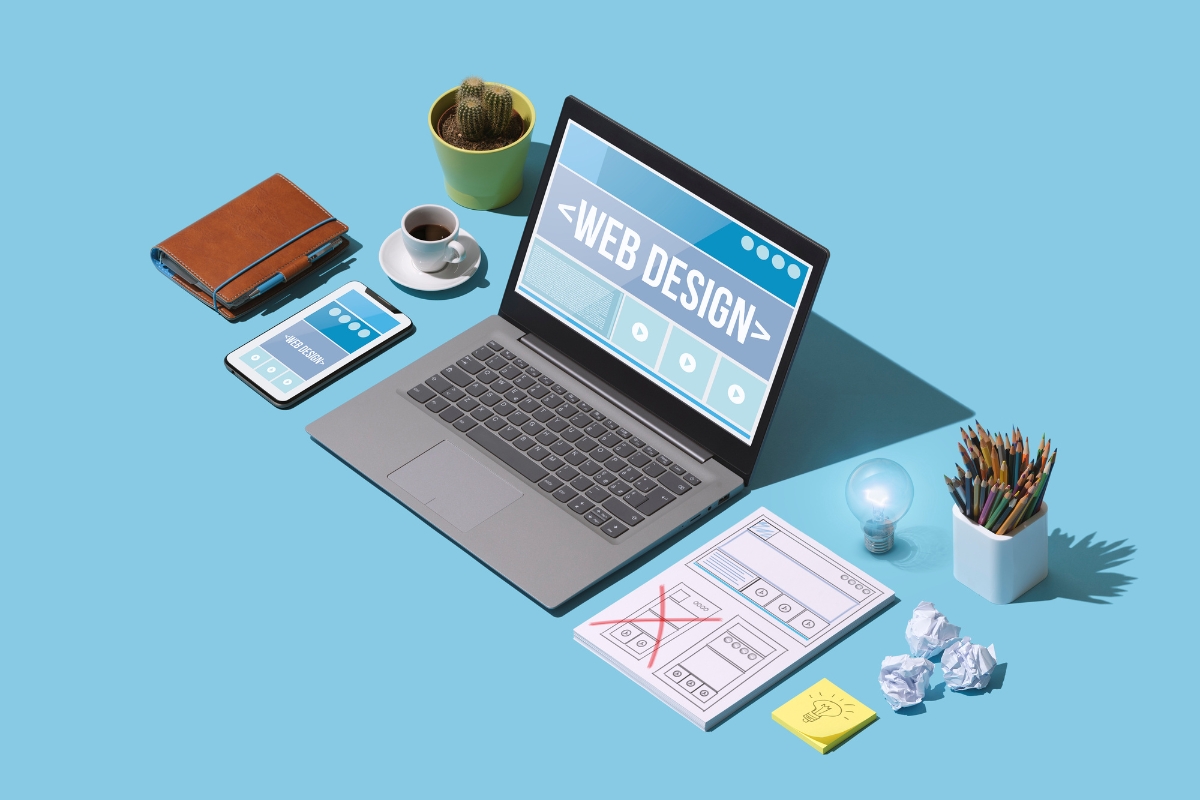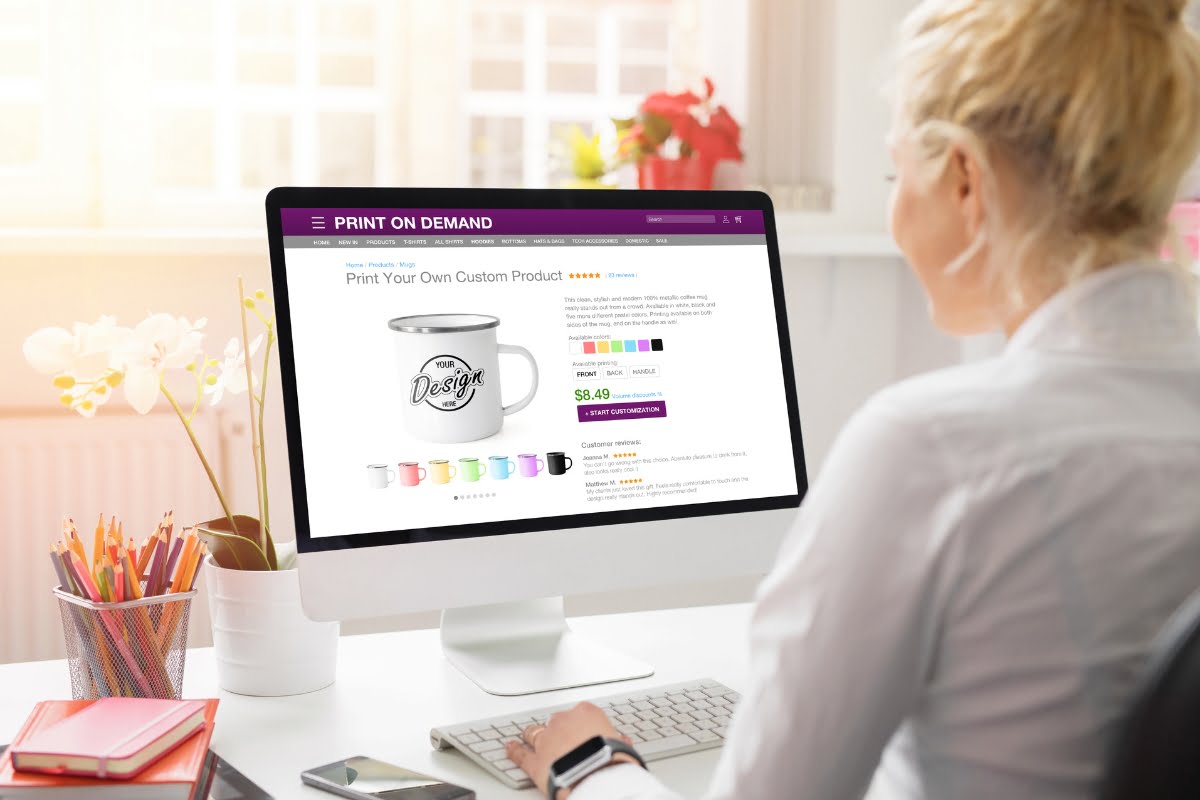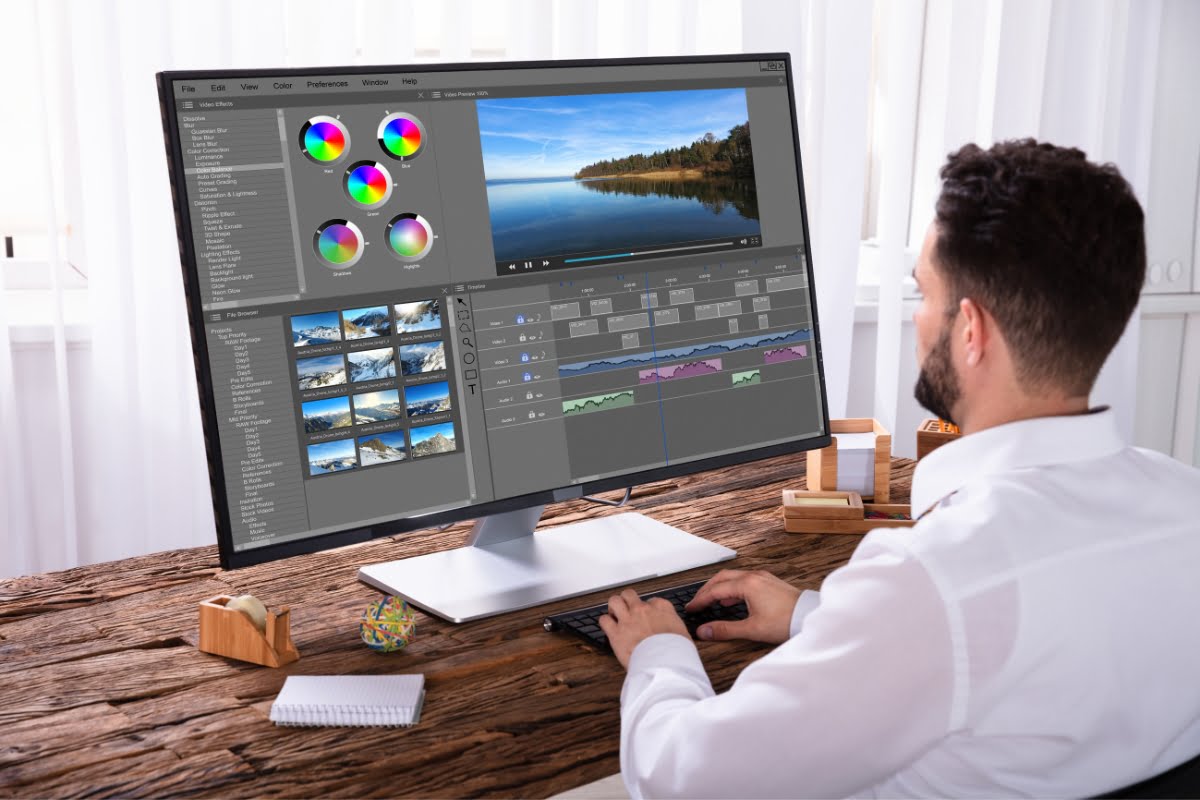Are you a beginner in the world of website design, eager to unleash your creative potential? Look no further! In this blog post, we will dive into a collection of simple website design ideas for beginners like yourself.
Whether you’re building a personal blog, an online portfolio, or a small business website, these ideas will help you create a visually stunning and user-friendly online presence. So, let’s get started and create a website that not only looks great but also leaves a lasting impact on your audience!
Website Design Ideas for Beginners: How to Create a Stunning Online Presence
Choosing the Right Color Palette for Your Website

When it comes to website design, color plays a crucial role in creating a visually appealing and cohesive look. The right color palette can evoke emotions, convey your brand identity, and make your website stand out from the competition. As a beginner in website design, it’s important to choose the right color palette that aligns with your digital brand guide and resonates with your target audience.
To start off, consider the purpose and tone of your website. Are you aiming for a professional and corporate look or a fun and playful vibe? Different colors evoke different emotions, so it’s essential to choose colors that reflect the mood you want to create. For example, blue is often associated with trust and reliability, while yellow is often associated with happiness and energy.
After determining the desired mood, the next step involves choosing a color palette. Complementary colors, which are situated on opposite ends of the color wheel, offer a captivating contrast that instantly draws attention. Alternatively, analogous colors, found adjacent to each other on the color wheel, create a tranquil and harmonious ambiance.
When choosing colors for your website, keep in mind accessibility as well. Ensure that there is enough contrast between text and background colors to make it easy for users with visual impairments to read your content. Tools like WebAIM’s Contrast Checker can help you determine if your color choices meet accessibility standards.
Remember, simplicity is key when it comes to choosing a color palette for your website. Stick to two or three main colors and use shades or tints of those colors for variation. Too many colors can be overwhelming and distract from your content.
The Importance of Typography and How to Choose the Perfect Fonts

Typography plays a crucial role in website design as it affects readability, user experience, and overall aesthetics. Choosing the perfect fonts can elevate your website design from ordinary to extraordinary. As a beginner, it’s important to understand the different types of fonts and how they can be used effectively.
Fonts can be divided into two primary categories: serif and sans-serif. Serif fonts are characterized by small decorative lines at the ends of characters, whereas sans-serif fonts lack these embellishments.
Serif fonts are commonly associated with tradition, elegance, and formality, while sans-serif fonts are considered modern, clean, and casual. When selecting fonts for your website, it is important to consider the desired overall tone and personality you wish to convey.
For a professional appearance, you may opt for serif fonts such as Times New Roman or Georgia. Conversely, if you prefer a contemporary and minimalist aesthetic, sans-serif fonts like Arial or Helvetica may be more appropriate.
It’s also important to consider readability when choosing fonts. Avoid using overly decorative or intricate fonts that may be difficult to read on screens. Stick to simple and legible typefaces that ensure your content is easily accessible to all users.
To add visual interest and create contrast in your typography, consider using different font weights (e.g., bold or light) or pairing contrasting font styles (e.g., pairing a serif font with a sans-serif font). This can help guide users’ attention and make key information stand out.
When it comes to font sizes, make sure they are large enough to be easily readable on both desktop and mobile devices. Aim for a minimum font size of 16 pixels for body text and adjust accordingly for headings or subheadings.
Creating an Engaging Homepage Design

Your homepage is often the first impression visitors have of your website. It’s crucial to create an engaging homepage design that captures their attention and encourages them to explore further. As a beginner in website design, here are some tips to help you create an impactful homepage.
First and foremost, keep your homepage clean and clutter-free. Avoid overwhelming visitors with too much information or a crowded layout. Instead, focus on showcasing the most important elements of your website, such as your brand message, key services or products, and a clear call to action.
Consider using high-quality images or visuals that reflect your brand and resonate with your target audience. Visuals can instantly capture attention and create an emotional connection with visitors. However, be mindful of the file size of your images to ensure fast loading times.
Incorporate social proof elements such as testimonials or client logos to build trust and credibility. Positive reviews from satisfied customers can go a long way in convincing new visitors to engage with your website.
Finally, don’t forget about mobile responsiveness. With more people accessing websites on their smartphones or tablets, it’s essential that your homepage design looks great on all devices. Test your website on different screen sizes to ensure a seamless user experience across platforms.
Navigating the Navigation: Tips for Building an Intuitive Menu

The navigation menu is one of the most important elements of any website design. It acts as a roadmap for users to navigate through different pages and find the information they’re looking for.
Keep your menu structure simple and logical. Avoid overwhelming users with too many options or complex dropdown menus. Stick to a maximum of seven main menu items for easy navigation. If you have more pages or categories, consider using submenus or a hamburger menu for mobile devices.
Place your menu in a prominent location, such as at the top of the page or in a sidebar. Users expect to find the navigation menu in these standard positions, making it easier for them to locate and use.
Use clear and descriptive labels for your menu items. Avoid using jargon or ambiguous terms that may confuse users. Instead, use language that is familiar and easily understood by your target audience.
Consider incorporating visual cues such as icons or arrows to indicate dropdown menus or submenus. This helps users understand that there are additional options available under a specific menu item.
Ensure that your menu is easily accessible on all devices, including mobile. With the increasing use of smartphones and tablets, it’s important to have a responsive design that adapts to different screen sizes. Test your menu on various devices to ensure it remains user-friendly and functional.
Lastly, don’t forget about usability testing. Ask friends, family members, or colleagues to navigate through your website and provide feedback on the ease of use of your menu. Their insights can help you identify any areas for improvement and make necessary adjustments.
Optimizing Your Website for Mobile Devices

In today’s digital age, having a mobile-friendly website is no longer an option but a necessity. With the increasing number of people accessing the internet through smartphones and tablets, you have to make sure that your website is fully optimized for mobile devices. Here are some tips to help you unleash your creative potential and design a simple website that is beginner-friendly and mobile-ready.
- Responsive Design: One of the most important aspects of optimizing your website for mobile devices is using responsive design. This design approach allows your website to adapt and scale seamlessly to different screen sizes and resolutions. By implementing responsive web design, you can provide a consistent and user-friendly experience across all devices, whether it be a smartphone, tablet, or desktop.
- Streamlined Navigation: When it comes to mobile optimization, simplicity is key. Avoid cluttering your website with unnecessary elements and focus on providing a streamlined navigation menu. Ensure that your menu is easily accessible and prioritize the most important sections of your website. By simplifying the navigation, you can enhance user experience and make it easier for visitors to find the information they need.
- Optimize Images and Videos: Large and unoptimized images can significantly slow down your website’s loading speed on mobile devices. To ensure a smooth browsing experience, optimize your images and videos by compressing their file sizes without compromising the quality. This will not only improve loading times but also reduce data usage for mobile users who may have limited bandwidth.
- Keep Content Concise: Mobile users typically have shorter attention spans, so it is essential to keep your content concise and to the point. Break up long paragraphs into shorter ones and use bullet points or subheadings to make your content scannable. By presenting information in bite-sized chunks, you can make it easier for mobile users to consume and retain the key messages of your website.
- Test and Optimize: Once you have implemented the above strategies, it is crucial to test your website across various mobile devices and browsers. This will help you identify any issues or inconsistencies and make necessary adjustments. Regularly monitoring and optimizing your website for mobile devices will ensure that it remains user-friendly and accessible to all visitors.
Implementing User-Friendly Forms and Contact Pages

One crucial aspect of website design, especially for beginners, is implementing user-friendly forms and contact pages. These elements are essential for creating a seamless user experience and fostering effective communication between website visitors and the site owner or administrator.
User-friendly forms ensure that visitors can easily provide their information or interact with the website. They should be visually appealing, well-organized, and straightforward. Avoid overwhelming users with excessive fields or complicated layouts. Instead, keep forms concise, only asking for essential details.
When designing forms, consider using clear labels and placeholders inside the input fields to guide users. This helps them understand what information is required. Additionally, provide instant feedback by displaying error messages when users submit incorrect or incomplete data. This prevents frustration and allows users to rectify their mistakes promptly.
Contact pages are equally crucial for effective communication. A well-designed contact page should prominently display the necessary contact information, such as a contact form, email address, phone number, or physical address. This ensures that visitors can easily reach out to the website owner or team.
To enhance user experience, consider including a map or directions if applicable, especially for businesses with a physical location. This can help visitors find their way easily. Additionally, consider implementing a captcha or other anti-spam measures to prevent unwanted automated submissions.
It’s also essential to ensure that contact forms and pages are mobile-friendly. With more people accessing websites through their mobile devices, it’s crucial to optimize forms and contact pages for smaller screens. This means using responsive design techniques to ensure they look and function properly on different devices and screen sizes.
Lastly, regularly test the forms and contact pages on your website to ensure they are functioning correctly. Check if submissions are being received, if error messages are displayed correctly, and if any adjustments need to be made to improve the user experience.
Mastering the Art of White Space: Creating a Clean and Minimalist Design

White space, also known as negative space, is a crucial element in any design, especially when it comes to creating a clean and minimalist website. Mastering the art of white space can significantly enhance the visual appeal and usability of your website. In this blog post, we will explore some simple yet effective website design ideas for beginners that will help you unleash your creative potential.
One of the key principles of minimalist website design is the use of ample white space. White space refers to the empty areas between elements on a webpage. It allows for better readability, improved focus on important elements, and an overall sense of elegance and sophistication.
When designing a website, beginners often make the mistake of overcrowding the page with unnecessary elements. However, by embracing white space, you can create a more balanced and visually pleasing layout. The key is to find the right balance between content and empty space.
One way to utilize white space effectively is by using larger margins and padding. By increasing the space around each element, you can create a sense of breathing room and make your content stand out. This technique is particularly useful when designing the header, footer, and sidebar sections of your website.
Another strategy is to simplify your navigation. Instead of cluttering your menu with multiple options, focus on the most essential pages and make them easily accessible. By reducing the number of items in your navigation menu, you can create a cleaner and more streamlined design.
Typography also plays a crucial role in creating a minimalist design. Choose a clean and legible font that complements the overall aesthetic of your website. Experiment with different font sizes, weights, and spacing to achieve the desired effect. Remember to give your text enough room to breathe by increasing line spacing and paragraph spacing.
Color palette selection is another important aspect of minimalist design. Stick to a limited color scheme consisting of two to three colors. Avoid using overly bright or contrasting colors that can be visually overwhelming. Instead, opt for subtle and muted tones that create a sense of calm and simplicity.
In addition to white space, don’t forget to carefully consider the placement of your images and graphics. Use them strategically to enhance the visual appeal of your website without overpowering the overall design. Consider using high-quality and relevant images that align with your brand identity.
Incorporating Call-to-Action Buttons and Elements

When it comes to creating a website, incorporating call-to-action buttons and elements is crucial for engaging users and driving conversions. These interactive elements are designed to prompt visitors to take a specific action, such as making a purchase, signing up for a newsletter, or downloading a resource.
The first step in incorporating call-to-action buttons and elements is to strategically place them throughout your website. One of the most effective locations for a call-to-action is above the fold, which refers to the visible area of a webpage without scrolling. By placing a call-to-action prominently in this area, you can capture the attention of visitors and compel them to take action without requiring them to navigate through the entire page.
Another important aspect to consider is the design of your call-to-action buttons. These buttons should be visually appealing, easy to locate, and stand out from the rest of your website’s design. They should also be clearly labeled with action-oriented text that tells users exactly what they can expect when they click the button. For example, instead of a generic “Submit” button, consider using a more specific and enticing label such as “Get Your Free Ebook Now!”.
In addition to strategically placing call-to-action buttons, you can also incorporate other elements to further enhance their effectiveness. For instance, you can use eye-catching graphics or animations to draw attention to your call-to-action. You can also leverage the power of social proof by displaying testimonials or reviews near your call-to-action, which can help build trust and credibility.
Furthermore, it is crucial to ensure that your call-to-action buttons and elements are mobile-friendly. With the increasing use of smartphones and tablets for browsing the internet, it is essential that your website is optimized for mobile devices. This includes making sure that your call-to-action buttons are large enough to be easily tapped with a finger and that they are not obscured by other elements on the page.
Conclusion: Unleashing Your Creative Potential in Website Design
Website design is not just about technical skills and knowledge; it is also about tapping into your creative potential. As a beginner in website design, it is important to explore different ideas and approaches to create visually appealing and engaging websites.
Let Newman Web Solutions be your partner in unleashing your creative potential and creating a digital presence that stands out with our professional web design services. Contact us at (404) 301-9189 or schedule a 30-minute free marketing strategy session to discuss how we can collaborate on bringing your website design ideas to life.






